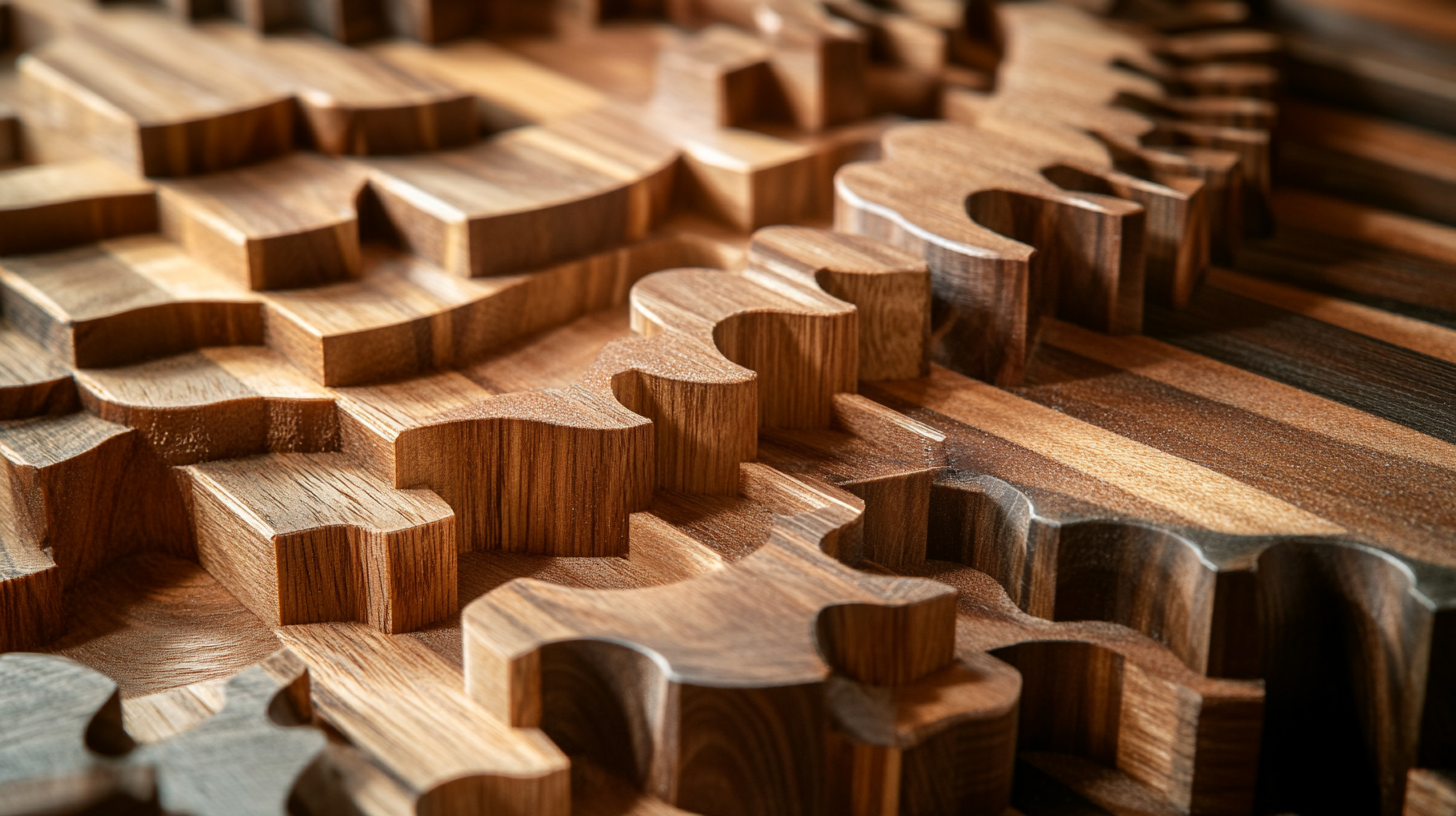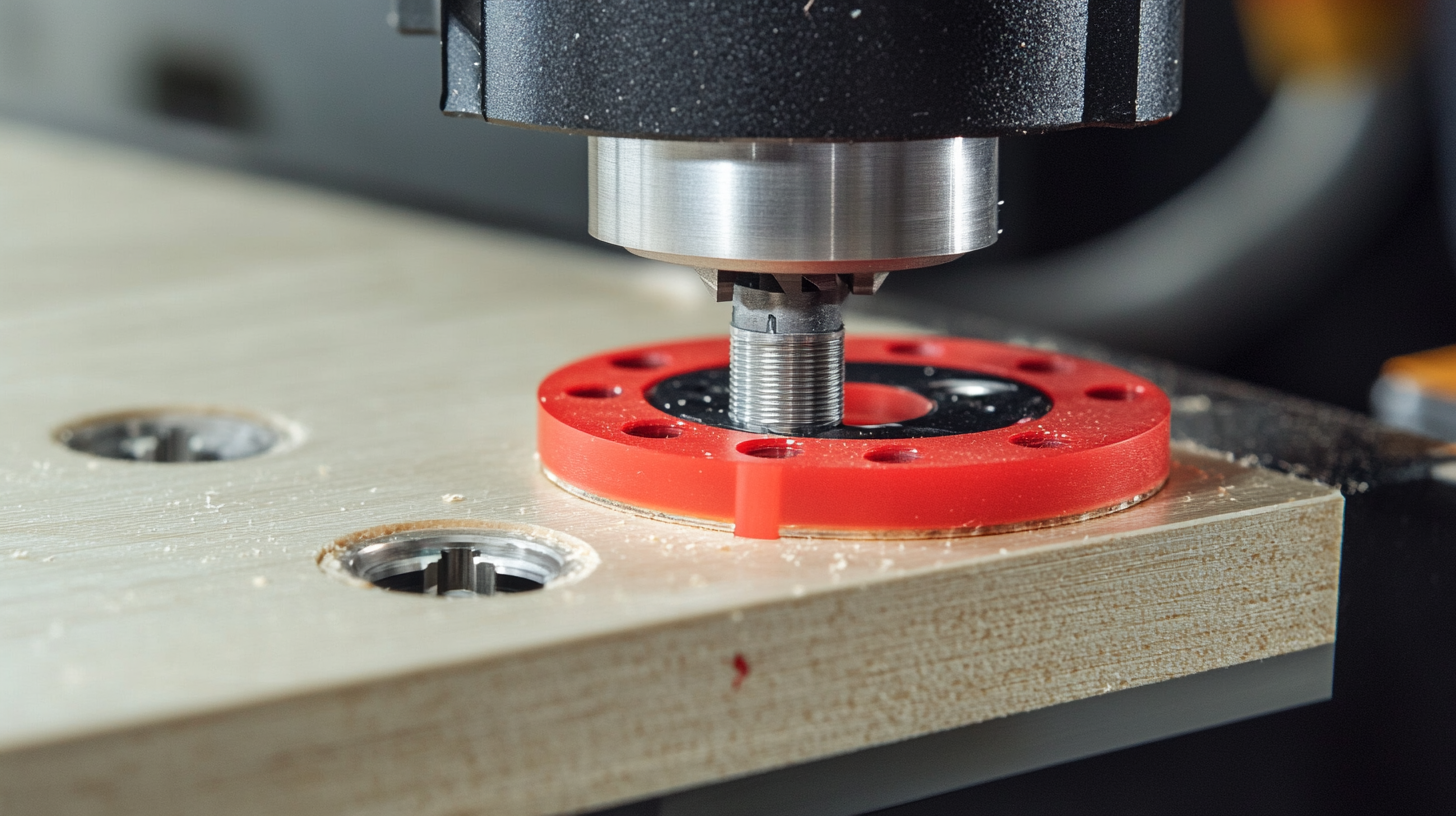In the world of woodworking, precision and efficiency are paramount, especially when it comes to shaping and flattening large surfaces. One of the essential tools in achieving this level of accuracy is the Flattening Router Bit. These specially designed bits are tailored to help woodworkers create smooth, even surfaces on various materials, making them an invaluable addition to any workshop. Whether you are a seasoned professional or a hobbyist, understanding the intricacies of flattening router bits can elevate your craftsmanship to the next level.
As we delve into this comprehensive handbook for sourcing the best flattening router bits, we will explore the critical factors that influence their performance, quality, and suitability for different tasks. From material selection to bit geometry, each aspect plays a significant role in achieving the optimal results. By equipping yourself with the right knowledge, you can make informed decisions, ensuring that your projects not only meet but exceed your expectations. Join us as we navigate through the essential features and considerations that will help you find the perfect flattening router bit for your woodworking endeavors.

Flattening router bits are essential tools for woodworkers who seek precision and efficiency in their projects. Designed specifically to create flat surfaces, these bits excel in tasks such as leveling slabs, flattening tabletops, and smoothing rough edges. Understanding the functionality of flattening router bits provides a deeper appreciation for their role in achieving professional-quality results. At the core of a flattening router bit's functionality is its unique design, which typically features wider cutting edges compared to standard router bits. This allows for a more significant surface area to be engaged with the wood, facilitating a faster and smoother cut. Many flattening bits are equipped with multiple flutes, enhancing their ability to remove material efficiently while reducing the likelihood of burn marks or tear-out, which can compromise the quality of the finished surface. Moreover, the use of a flattening router bit often goes hand-in-hand with a router sled setup. This combination allows woodworkers to traverse the bit across the surface of the wood accurately, ensuring an even and consistent flattening process. By understanding the functionality and proper application of flattening router bits, craftsmen can enhance their woodworking experiences, yielding surfaces that are not only aesthetically pleasing but also ready for further finishing.

When selecting flattening router bits, there are several key features to consider that can significantly impact woodworking projects. One of the most critical aspects is the cutter geometry. According to a report by Woodworking Network, bits with a higher number of cutting edges tend to provide a smoother finish and reduce tear-out, which is particularly beneficial when working with hard woods. A bit with at least 2 to 4 carbide cutters is generally recommended for achieving optimal performance.
Another important feature is the material of the router bit. High-speed steel (HSS) bits are common, but carbide-tipped bits, although typically more expensive, offer superior durability and longevity. A study conducted by the Furniture Today magazine highlighted that carbide bits outperform HSS by lasting up to three times longer, making them a cost-effective choice in the long run, especially for frequent users. Furthermore, considering the bit's overall diameter can also affect your results; larger diameters can remove material more rapidly but may require more power from your router, which is something that needs careful consideration during selection.
Finally, the profile of the router bit plays a vital role in the finished product. A straight bit is the most versatile choice for flattening, but for more intricate designs, spiral or specialty bits can be used to achieve unique results. According to the Woodworking Machinery Industry Association, spiral bits can provide chips that are less likely to burr the material, ensuring a clean edge. In summary, understanding these key features not only aids in selecting the right flattening router bits but also enhances the quality and efficiency of woodwork projects.

When it comes to woodworking, choosing the right flattening router bit can significantly impact the efficiency and quality of your projects. Not all flattening router bits are created equal, and understanding the differences among the various types is crucial for achieving the desired results. Generally, flattening router bits can be categorized based on their design, material, and intended use.
Firstly, the traditional straight bits are the most common and provide a straightforward cutting action. They are typically made of high-speed steel (HSS) or carbide, delivering effective performance for general flattening tasks. However, their downside includes a tendency to leave behind a rough surface, necessitating additional finishing passes. In contrast, spiral bits and compression bits offer a refined cutting action, resulting in smoother surfaces right off the router. Spiral bits feature helical flutes, which help in effectively removing more material while minimizing tear-out, making them ideal for hardwoods and intricate designs.
Moreover, specialized bits like the up-cut and down-cut variants play unique roles in the flattening process. Up-cut bits lift chips away from the workpiece, ensuring clear visibility and less debris during operation. Conversely, down-cut bits press the material down as they cut, providing a clean finish on the top edge of the wood. As a woodworker navigating through these options, assessing your project requirements—such as material type, desired finish, and the intricacy of the cut—will empower you to select the flattening router bit that best matches your needs.

When it comes to using flattening router bits, understanding best practices can significantly enhance both the effectiveness and longevity of your tools. First and foremost, ensure that you are using the correct feed rate for the specific bit you are working with. A consistent feed rate not only helps achieve a smooth finish but also minimizes the risk of burning the wood. Moreover, take the time to adjust the depth of cut appropriately—too deep can strain the bit and lead to premature wear, while too shallow may require multiple passes, leading to unnecessary wear over time.
Regular maintenance is equally crucial for keeping your flattening router bits in optimal condition. After each use, clean the bits to remove any resin or debris that might have accumulated during the process. This practice prevents buildup that can affect performance and prolongs the life of the bits. Additionally, periodically assessing the sharpness of your bits will help you determine when it's time for resharpening. Dull bits can create poor finishes and require excessive force, increasing the chances of accidents and damaged materials.
Finally, storing your router bits properly can significantly impact their usability. Always keep them in a dry environment and consider using protective cases or covers to prevent any unintentional damage when not in use. Following these best practices will not only optimize your woodworking projects but also ensure that your flattening router bits serve you well for years to come.
When sourcing flattening router bits, many woodworkers fall prey to common mistakes that can significantly impact their projects. One prevalent error is overlooking the importance of bit material. According to a report by the Woodworking Industry Association, carbide-tipped router bits can last up to 50% longer than high-speed steel bits, providing better durability and a cleaner finish. Investing in quality materials can lead to enhanced performance and reduced tool replacement costs in the long run.
Another critical mistake is failing to consider the bit design and profile. Different projects may require specific profiles, such as straight or spiral bits, which can affect how effectively the router handles various types of wood. Research indicates that using the correct bit can increase the efficiency of flattening tasks by up to 30%, particularly when working with dense hardwoods. Therefore, a careful evaluation of the project needs and the appropriate bit specifications is essential to avoid frustration and save time.
Moreover, ignoring the importance of compatibility with existing tools can lead to additional costs and complications. It's essential to ensure that the selected flattening router bits fit the collet of the router being used. Misaligned tools can cause vibration issues, affecting both the quality of the work and the lifespan of the equipment. A comprehensive understanding of the specifications can prevent such mismatches and ensure smoother operation in woodworking projects.